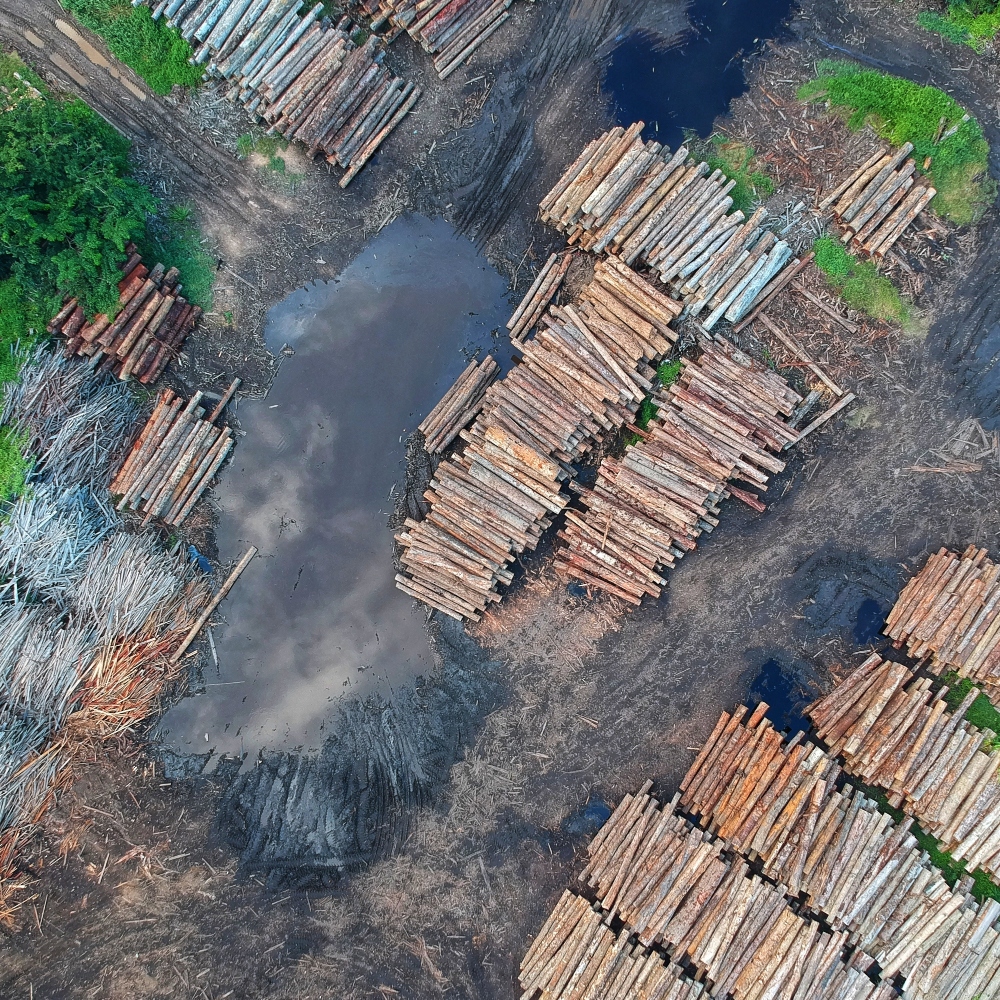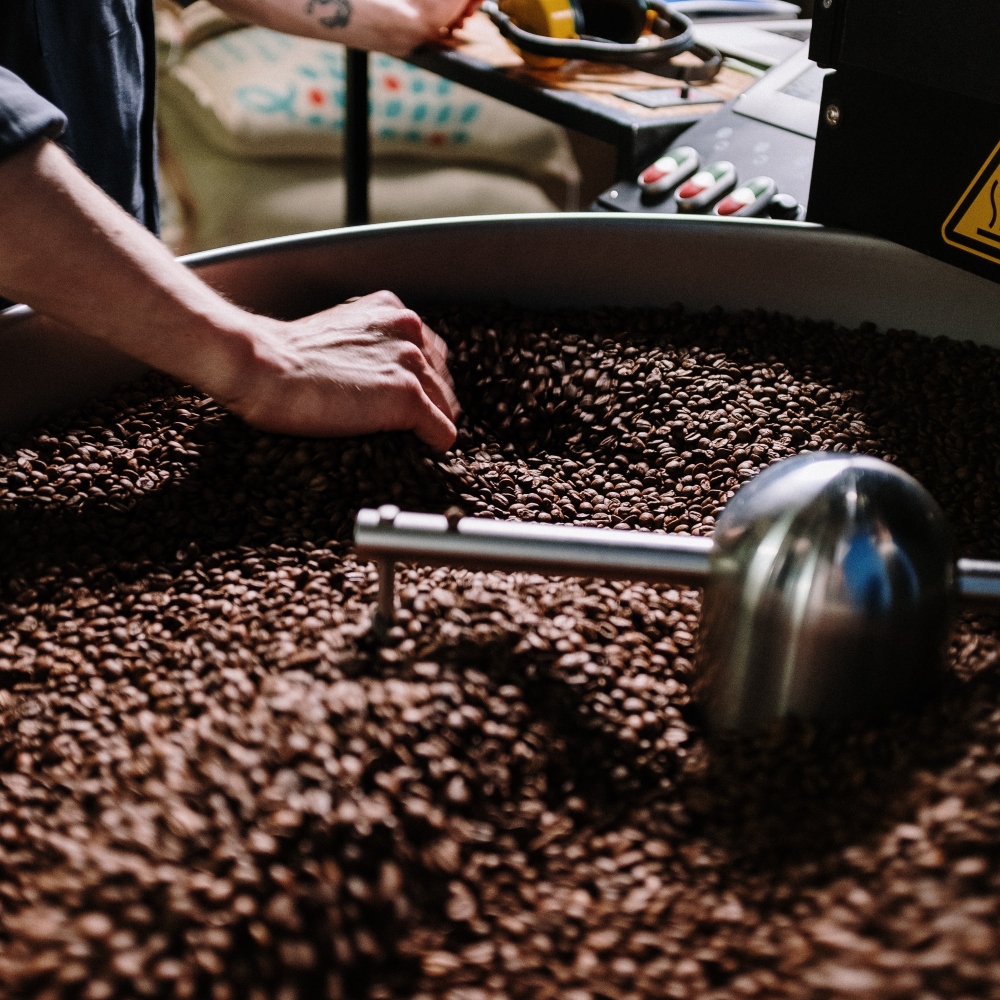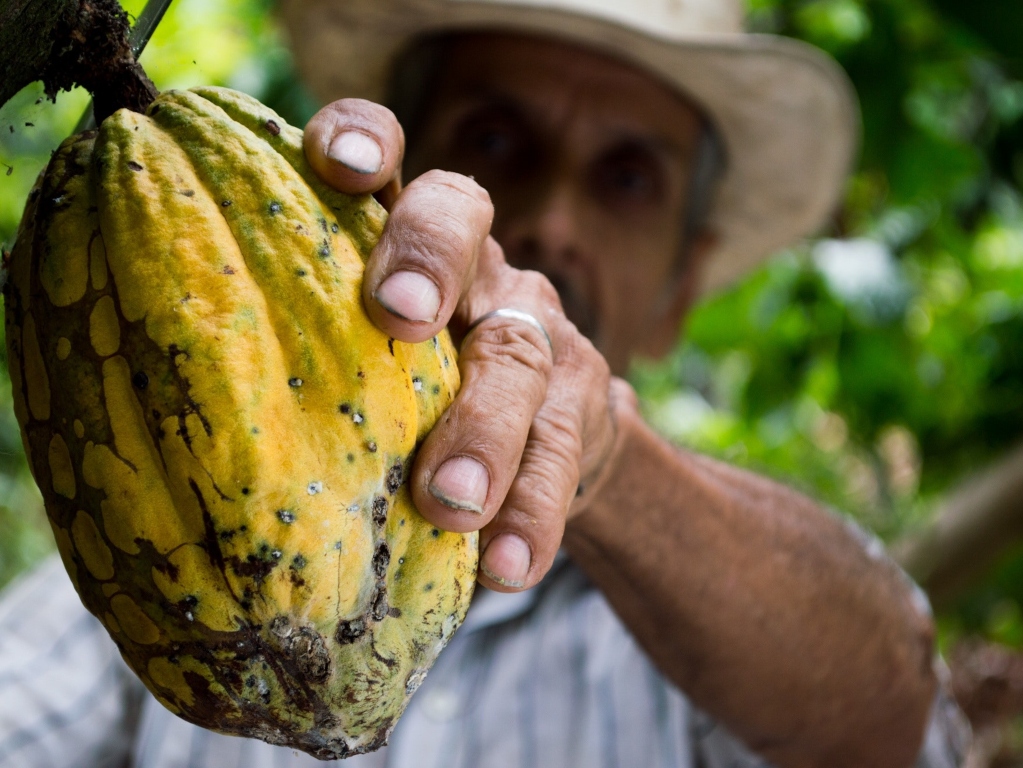Coffee and Chocolate Drive Deforestation and Human Rights Violations. Can the Industries Change?
8 Mins Read
The world loves coffee and chocolate. But both are linked to two big problems: deforestation and ongoing human rights violations. What will it take for the industries to change their ways for good?
Both coffee and chocolate are loved around the world for their deep and rich flavors, but also, their innate abilities to provide us with much-needed pick-me-ups. Coffee provides an energizing caffeine boost and chocolate has unquestionable mood-lifting powers. But while many of us take both coffee and chocolate for granted and couldn’t imagine getting through the week without them, there is a price to pay for each of these grocery store regulars. And it’s not just the number on the tag.
Chocolate comes from cocoa (also known as cacao), a threatened crop that is associated with environmental destruction and human exploitation. And coffee beans, unfortunately, are connected with very similar problems. Here, we break why our love for chocolate and coffee is problematic. But also take a look at some of the actions being taken to clean up both industries, as well as which brands are doing the right thing by people and the planet.
Coffee, chocolate, and deforestation
The coffee and chocolate industries are huge. To put it into numbers, the global chocolate market was valued at more than $131 billion USD in 2021. In 2022, coffee hit more than $433 billion. Demand for both is predicted to keep growing. But in order to fulfill this, a lot of land is required. And already, both coffee and chocolate contribute to significant amounts of deforestation.
Last year, a study from Japan’s Research Institute for Humanity and Nature suggested that in the west, the average consumer of coffee and chocolate, as well as beef and palm oil, contributes to the felling of four trees every year. On an individual level, this doesn’t seem like a lot. But when you consider the size of the markets, this is catastrophic.
The study concluded that Italy, Germany, and the US are driving deforestation in Vietnam, where coffee production is a major source of income. It also found that the UK and Germany, two major European chocolate markets, are driving deforestation primarily in Ghana and Ivory Coast. In fact, in Ivory Coast, the top cocoa producer in the world, more than 85 percent of the forest has been lost since 1960.

But chocolate deforestation doesn’t just come from growing the beans. Most mainstream products also contain palm oil, which is a major driver of forest destruction. According to some estimates, palm oil plantations account for more than 27 million hectares of land around the world.
All of this deforestation is damaging to the planet, not just because it affects wildlife ecosystems and habitats, but also because it drives up greenhouse gas emissions. This is because as trees grow, they absorb carbon dioxide through photosynthesis. However, when they’re cut down or burnt to make room for plantations of crops like cocoa and coffee, all of this is released back into the atmosphere.
In fact, after fossil fuels, deforestation is the largest human source of greenhouse gas emissions. All of these gasses warm up the planet and contribute to a rise in devastating natural disasters, like extreme heatwaves, storms, floods, drought, and wildfires.
Human rights violations
Demand for coffee and chocolate doesn’t just impact the natural world. Both industries also have a reputation for exploiting human beings.
Just last year, Mars, Nestlé, Mondelēz, and Hershey’s, four major suppliers of chocolate products, were all named in a child slavery lawsuit. It was brought against them by a human rights law firm, called International Rights Advocates, on behalf of eight children from Mali. All of the children, who are now adults, claimed they were forced to work on cocoa plantations in Ivory Coast and were not paid for their time.

These individuals represent a much bigger problem in the industry. According to Slave Free Chocolate, a coalition working to end forced child labor in the cocoa industry, the number of children exploited in the coffee industry currently stands at around 1.6 million. It notes that this happens because the farmers themselves are not paid a living wage. Their rates, which are less than $1 a day in some places, haven’t increased since the 1970s.
“We are talking about a $100 billion dollar industry, it seems the power is there,” writes the coalition’s director Ayn Riggs in a blog post. “The problem is that the intent isn’t. It must really boil down to profit over promises.”
And again, there are major parallels here with the coffee industry, which is also associated with exploitation.
In 2020, one investigation alleged that in Guatemala, children under the age of 13 were picking beans for one of Nespresso and Starbucks’ coffee suppliers. They were paid, but only around $6 per day. Just a little more than the price of a single Venti Pumpkin Spice latte. Again, this is likely caused by a lack of compensation for farmers. The investigators, which found evidence of child labor on all seven farms they visited, concluded that from one standard cup of coffee, only around 12 cents actually goes to the farmer.
Climate crisis threats
Both industries are fraught with environmental and ethical concerns. But neither may have a future at all. Because, despite rising demand, the climate crisis could wipe them out completely.
Increasing temperatures aren’t just a threat to humans, but to crops too. After all, both coffee and cocoa need a specific environment to grow. According to some reports, the area suitable for growing Arabica coffee, which is what most of the world drinks, could be cut in half by 2050. Likewise, with cocoa, the climate crisis is considered one of the biggest threats to its cultivation.
In 2018, Michel Barel, from French cocoa consultancy firm KawaCao, told Food Navigator: “The cocoa tree needs heat but also lots of humidity, and when we see the Sahel advancing several kilometers southwards every year towards the Côte d’Ivoire [Ivory Coast] and Ghana, this reduces their cocoa-growing capacity.”
So, what are the solutions?
According to Barel, the Ivory Coast government can encourage solutions to the impending threat of the climate crisis by supporting cocoa farmers to plant more shading trees, for example, which will help to protect cocoa plantations from the heat.
And last year, reports surfaced claiming that a wild coffee plant, called Stenophylla, had been rediscovered by scientists and could provide a more climate-resistant alternative to Arabica beans.
Protecting the future of these industries is one thing. But we also need to make sure that in the years to come, they are no longer exploiting people and the planet. And there is some promising progress on the horizon. The EU, for example, has announced a provisional political agreement that aims to fight deforestation.

When the rules are formally applied, all companies operating in the EU will be required to carry out “strict due diligence” on products associated with deforestation. This includes things like beef, coffee, cocoa, and palm oil.
“Since the EU is a major economy and consumer of these commodities, this step will help stop a significant share of global deforestation and forest degradation, in turn reducing greenhouse gas emissions and biodiversity loss,” the EU Commission notes.
And when it comes to child labor, law firms, like the International Rights Advocates, are helping to raise awareness of these issues. They are holding major industry juggernauts to account and helping to influence change. “Most of our cases originate because a multinational company is operating in a country without a fully functioning or corrupt legal system,” it notes. “And uses that lack of the rule of law knowingly to exploit and abuse workers, farmers, and others impacted by the company’s operations.”
Ethical, sustainable coffee and chocolate
As a consumer, it’s easy to feel powerless over the world’s biggest issues. But there are plenty of brands out there that are helping to drive industry change.
Original Beans produces carbon-negative chocolate, for example, which is because its own cacao gardens sequester more carbon than its supply chain emits. And food tech company Planet A Foods is getting around chocolate’s cocoa issue by avoiding it altogether. Right now, it’s working on creating a new type of chocolate that is 100 percent cocoa-free using precision fermentation. It’s joined by brands like WNWN Food Labs and Voyage Foods, the former released its first cocoa-free chocolate this year, while the latter is working on building B2B partnerships, including ingredient-focused collaborations, for its Cocoa-Free Chocolate.

On the other hand, Tony’s Chocolonely does use cocoa beans. But only those picked without child labor. The Dutch brand is also working to raise awareness of slavery in the chocolate industry and helping to empower cocoa farmers to produce crops without it.
In the coffee world, brands are also trying to produce the much-loved drink in a more sustainable way. Similar to Planet A and Voyage, Northern Wonder makes coffee without the coffee. The brand is constantly researching to try and find new ingredients that can deliver the same taste, without deforestation. And, again, Atomo Coffee’s cold brews are beanless, and instead, made with upcycled date seeds using molecular fermentation.
Plus, California Cultured is using cellular agriculture to make both chocolate and coffee products that are identical to the conventional versions on a molecular level, only they’re produced in the lab.
Fixing the coffee and chocolate industries is undoubtedly complex. It is going to take multiple solutions from governments, scientists, and industry giants. But also, us too. By choosing our purchases carefully, we can help to create a fairer, more sustainable future for both industries.
Lead image courtesy of Pexels.



